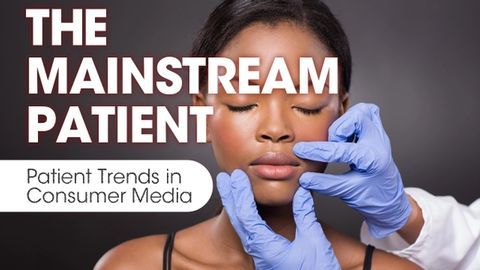- Case-Based Roundtable
- General Dermatology
- Eczema
- Chronic Hand Eczema
- Alopecia
- Aesthetics
- Vitiligo
- COVID-19
- Actinic Keratosis
- Precision Medicine and Biologics
- Rare Disease
- Wound Care
- Rosacea
- Psoriasis
- Psoriatic Arthritis
- Atopic Dermatitis
- Melasma
- NP and PA
- Skin Cancer
- Hidradenitis Suppurativa
- Drug Watch
- Pigmentary Disorders
- Acne
- Pediatric Dermatology
- Practice Management
- Prurigo Nodularis
- Buy-and-Bill
Article
The Mainstream Patient: February 7
Author(s):
This week's edition of the Mainstream Patient features stories about recommended razors for keratosis pilaris, dermatologist-recommended retinol serums, how to patch test skin care products, and more.
New this week: NewBeauty examines Dove's new body wash formula and InStyle discusses Billie razors for keratosis pilaris. Women's Health reviews 16 dermatologist-recommended retinol serums and Self explains how to correctly patch test skin care products. Elle explains RF microneedling and Allure names the best liquid exfoliants for brighter skin, according to dermatologists.
Dove Just Made Big Changes to Its Iconic Body Wash
"Powered by Unilever’s proprietary nano technology called 24-hour Renewing MicroMoisture, this revamped formula sets a new industry standard. According to Dove, this is the first body wash in the United States to use this technology, which not only moisturizes skin for 24 hours, but also contains millions of moisturizing microdroplets to simultaneously boost and help the skin retain that moisture. Key ingredients include stearic and palmitic fatty acids—all of the ingredients are from vegetable origin—that work with the skin’s microbiome to quench dryness."
I Have Keratosis Pilaris on My Legs, and This Is My Secret to a Smooth, Bump-Free Shave
"Now available on Amazon, Billie razors are designed specifically for sensitive skin. They have five sharp blades that are completely surrounded by aloe shaving soap, which activates when you get the razor wet and protects your skin as you shave. The starting package comes with a reusable razor, four blade replacements, and a magnetic holder that sticks to your shower wall and stores your razor when you’re not using it."
16 Best Dermatologist-Recommended Retinol Serums To Smooth And Brighten Every Skin Type 2023
"Dermatologist Dr. Dendy Engelman, MD, weighs in. "Retinol helps increase our skin’s natural processes, like building collagen, cell turnover, Vitamin A replenishment, and hydration. This improves skin’s overall appearance and prevents acne," she says. "Retinol also functions like an antioxidant that can interrupt the free-radical damage process that causes wrinkling and other signs of aging.'"
Exactly How to Patch Test Skin Care Products to See If They Cause Irritation
"If you regularly read skin care stories, you’ve probably come across the often-touted advice to patch test new products before trying them. (It’s certainly a suggestion SELF has made more than once!) But what exactly does patch testing a new serum or moisturizer entail? Is it something everyone really needs to do, or does it fall more into the “wash your comforter weekly” advice category—a goal that’s idealistic, but probably won’t happen every time it should? We asked a few top dermatologists for their take on this common recommendation, as well as step-by-step instructions for how to patch test skin care products at home."
I Tried RF Microneedling—Here’s Everything You Need to Know
"Like traditional microneedling, RF microneedling uses a device that contains hundreds of very short, very thin needles to create microscopic injuries in the skin, which stimulates cell regeneration. RF microneedling, however, also uses radiofrequency technology, which heats the skin and helps tighten it. 'The heat from the device actually remodels collagen and the depth of the needles create a controlled injury to promote elastin cells to regenerate, smoothen, and tighten the elastin fibers of the skin,' explains Bradley."
The Best Liquid Exfoliants for Brighter and Smoother Skin, According to Dermatologists
"Exfoliators that contain salicylic acid almost always have a potency of 2 percent, allowing them to ward off acne and bring down inflammation. Lactic acid, which is derived from milk and naturally produced by muscle tissues, has moisture-retaining properties, making it what board-certified dermatologist Joshua Zeichner, MD calls an ideal choice for those with dry skin. Mandelic and phytic acids are the most gentle of the five and best suited for sensitive skin."



